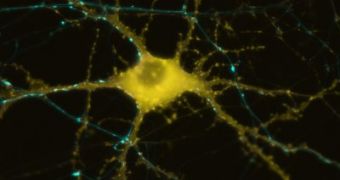The idea that certain diseases can be cured by reprogramming various types of cells and thus making them perform tasks they would otherwise never get to perform is nothing new. Still, the discovery that cell reprogramming need not necessarily be done outside the body is indeed attention worthy.
Long story short, a team of researchers working with the Lund University in Sweden now claim that, as their experiments on mice have shown, skin cells and support cells can successfully be turned into nerve cells while inside the brains of these rodents.
During the first part of these experiments, the researchers “fitted” fibroblasts and glia cells (i.e. support cells typically found inside an animal's brain) with genes whose purpose was that of compelling them to turn into nerve cells.
Later on, said cells were transplanted inside the rodents' brains, EurekAlert explains.
Once activated by means of a drug, these genes proved efficient in triggering the process of cell reprogramming and seeing to it that new nerve cells were formed.
The same source quotes researcher Malin Parmar, who wished to make the following observations: “We are now developing the technique so that it can be used to create new nerve cells that replace the function of damaged cells.”
“Being able to carry out the re-programming in vivo makes it possible to imagine a future in which we form new cells directly in the human brain, without taking a detour via cell cultures and transplants,” Malin Parmar further added.
Should future experiments prove equally successful, the technique developed by these researchers could one day be used to develop better treatments for brain disorders such as Alzheimer's, especially since the risks of having one's brain reject the new cells would be significantly reduced.
As Malin Parmar puts it, “The research findings have the potential to open the way for alternatives to cell transplants in the future, which would remove previous obstacles to research, such as the difficulty of getting the brain to accept foreign cells, and the risk of tumour development.”

 14 DAY TRIAL //
14 DAY TRIAL //